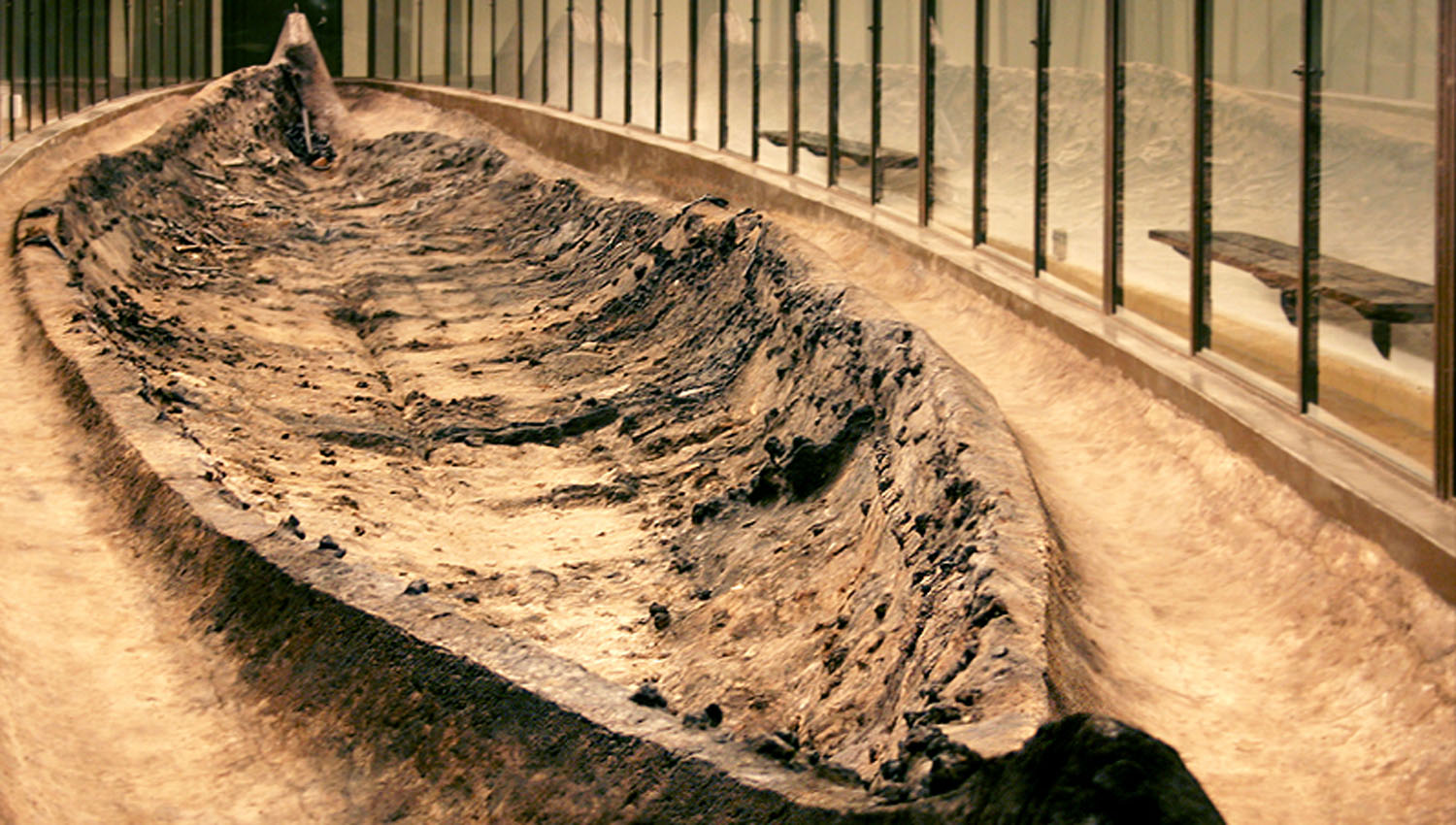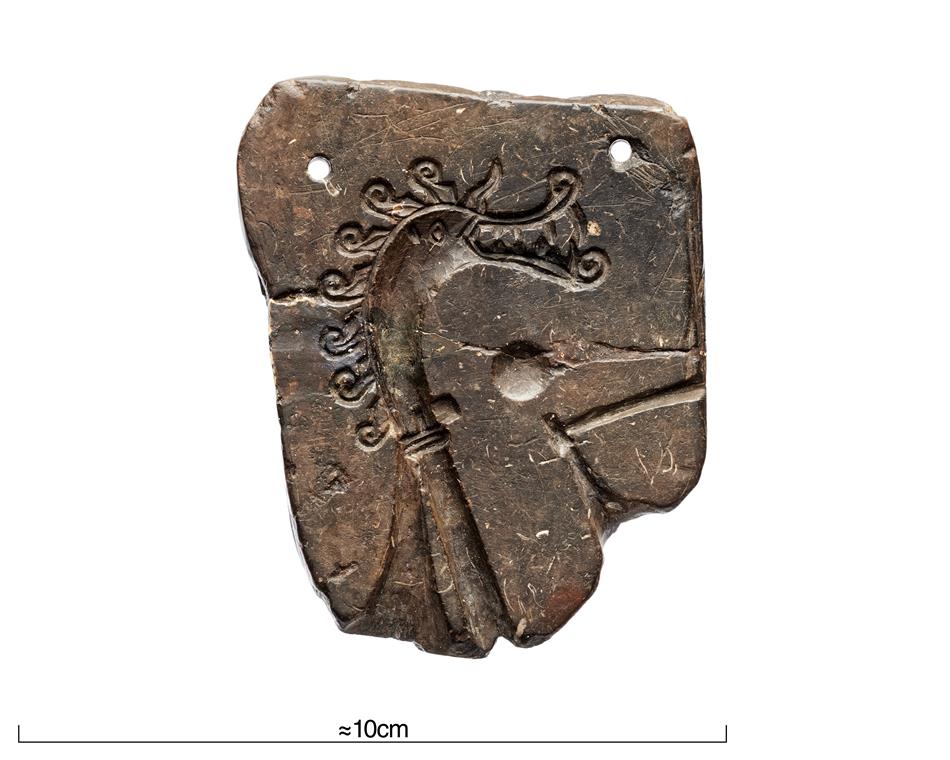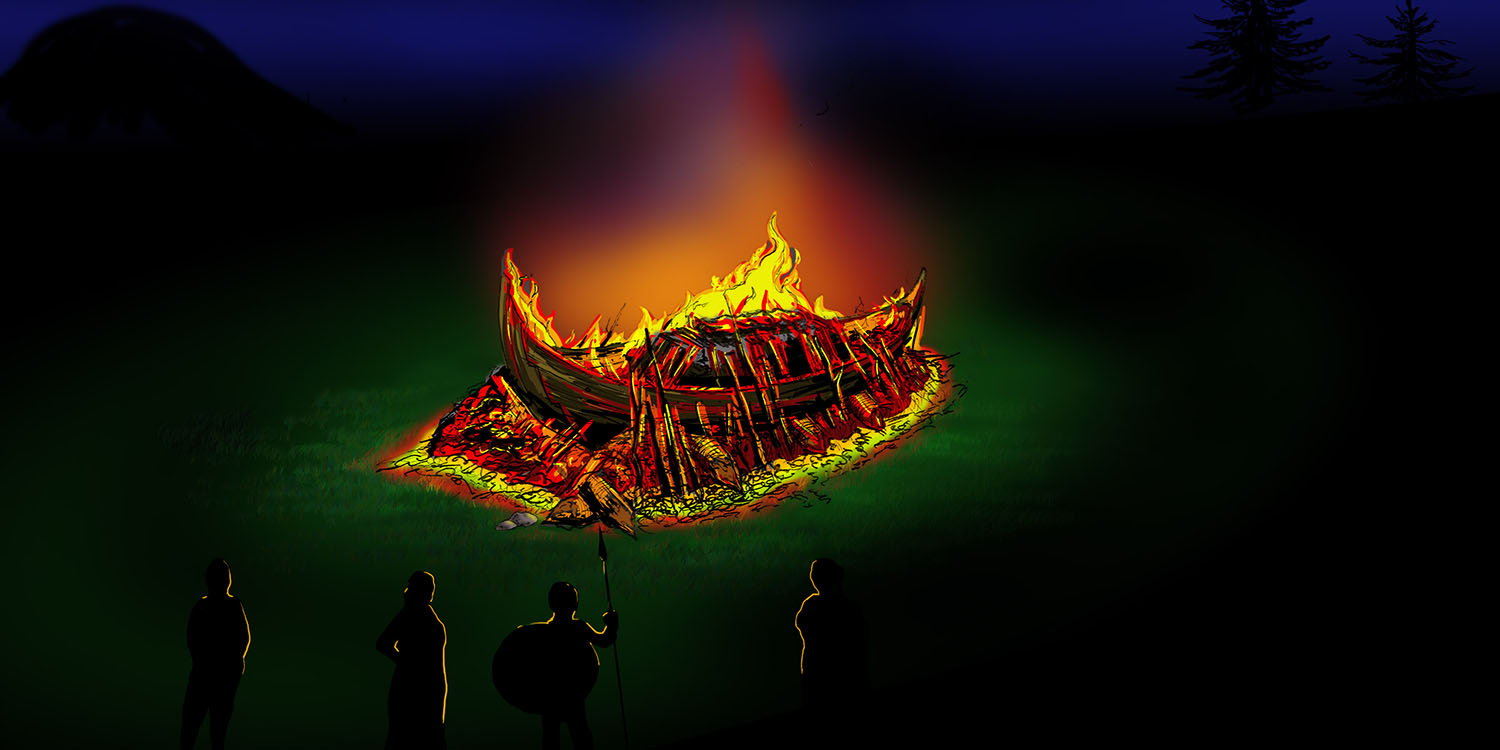
There are fewer unburned burial boats than burned ones, but they can give us more information. The burial sites can also have been plundered, which even happened in ancient times. Although the ships themselves usually no longer exist and the wood has decomposed into the soil, the clinch nails can provide information about the size and shape of these ships.
We know of several burial boats in Sweden, the most famous being those in Vendel and Valsgärde north of Uppsala. The finds mainly from the Vendel period, around the year 500-750, are what put these places on the map. But Viking Age graves can also be found there.
Västmanland contains the burial site Tuna in Badelunda. It has several different types of graves from much of the Iron Age. Women are buried in the richest graves, and during the Vendel and Viking Ages, one woman per generation seems to have been buried in a boat. Most of the boats were typical Viking Age models, though one stands out: it is the same size as the others, but is made in a way that makes researchers believe it was made by the Sámi people. Most boats and ships at this time used clinch nails, but the builders of this boat have employed a different technique – it is actually sewn. The Sámi used plant roots to hold the different parts of the boats together.

Photo: Malene Thyssen, CC BY-3.0
Right at the border of the Baltic Sea, on the Danish island of Funen, a Viking Age burial site was discovered in 1935. It contained a few smaller graves, the most famous containing a burial boat today known as the Ladby ship. It was the first burial boat to be excavated in Denmark, and although it was not well preserved like the famous Norwegian ships, the ship’s shape was clearly delineated thanks to the more than 2,000 clinch nails that remained in place in the soil. At the stem, some intriguing objects were found: iron spirals. According to various interpretations, the spirals were used as decoration on a dragon’s head. Other finds include a brooch pin and a mould from Birka depicting a dragon’s head with spiral-shaped decorations.

Mould from Birka. The iron spirals on the Ladby ship resemble the decoration on the dragon’s head. Photo: National Historical Museums, CC BY 4.0
In the far north of Öland lies Nabbelund. 400 metres from today’s shoreline, a burial cairn was found from the Vendel period, circa years 550 to 750. At various times, the grave had been plundered, destroyed, and served as material for building a stone pier in the water. But in 1938, the grave’s remnants were examined and a thrilling discovery could be made.
The burial mound, 15 metres wide and 2 metres high, covered an unburned burial boat. Some of the grave’s contents were disturbed or lost, but there was much left to discover. Among these discoveries was a rich array of weapons, with gilded shield and sword fittings. The skeletons of several animals were also found, including two dogs with leads. Human skeletal remains were found, too. The human remains were not as well preserved as those of the animals, which is not unusual. Even more unusual, the human remains come from at least three individuals. A burial boat typically contains one individual, sometimes two. So three individuals is unique, and only the burial boats from Salme have contained more individuals. Stay tuned for an upcoming article on this intriguing location!


